Mastering the Art of Hiring: Tips for Finding the Right Employees
Mastering the Art of Hiring: Tips for Finding the Right Employees
Hiring the right employees is not just about filling vacant positions—it's about finding individuals who will drive your business forward and contribute to its success. Whether you're a small startup or a large corporation, the process of recruitment can be daunting. With the right strategies in place, you can navigate the hiring journey with confidence. Here are some valuable tips to help you hire the best talent for your team.
1. Define the Role Clearly:
Before you begin the hiring process, take the time to clearly define the role you're looking to fill. There is great importance in outlining specific responsibilities, required skills, and qualifications for the job position you wish to fill. By having a clear understanding of the role, you can effectively target your recruitment efforts and attract candidates who are the right fit for the job.
2. Craft Compelling Job Descriptions:
Your job descriptions serve as the first point of contact with potential candidates, so make them count. A well-crafted job description not only outlines the job duties but also highlights your company culture and values. This helps attract candidates who align with your organization's mission and vision, fostering a more cohesive and productive work environment.
3. Leverage Multiple Recruitment Channels:
To reach a diverse pool of candidates, it's essential to leverage various recruitment channels. Utilizing job boards, social media platforms, and professional networks can expand your reach. By casting a wide net, you increase your chances of finding the perfect candidate for the job.
4. Conduct Thorough Interviews:
The interview stage is your opportunity to get to know potential candidates on a deeper level. Ask insightful questions that go beyond the candidate's resume and qualifications, and take into account what questions they ask you. This can show their interest in your business, and indicate what their goals are. Focus on assessing their fit for the role and your company culture. Additionally, be sure to check references to gain further insights into the candidate's past performance and work ethic.
5. Offer Competitive Compensation and Benefits:
In today's competitive job market, candidates are looking for more than just a paycheck. Offering competitive compensation and benefits packages is crucial for attracting top talent. Ensure that your offerings are in line with industry standards and meet the expectations of potential candidates.
In conclusion, hiring the right employees requires careful planning and execution. You can streamline your recruitment process and make more informed decisions when it comes to building your team by using the tips outlined above. From defining the role clearly to conducting thorough interviews and offering competitive compensation packages, these strategies will help you find the perfect fit for your organization's needs.
THIS ARTICLE IS FOR GENERAL INFORMATION PURPOSES ONLY. BUSINESS FINANCIALS, INC. (BFI) IS NOT ISSUING SPECIFIC FINANCIAL OR TAX ADVICE. PLEASE CONSULT WITH A LICENSED FINANCIAL PLANNER, TAX ATTORNEY, OR ACCOUNTANT FOR ASSISTANCE WITH YOUR SPECIFIC SITUATION. IF YOU NEED HELP, WE INVITE YOU TO CONTACT US. WE WILL BE HAPPY TO MAKE RECOMMENDATIONS OR REFER YOU TO A LICENSED PROVIDER WHO MAY BE BEST SUITED FOR YOUR SITUATION.
Sources:
www.forbes.com/advisor/business/how-to-hire-employees/ and www.indeed.com/career-advice/career-development/hiring-tips





